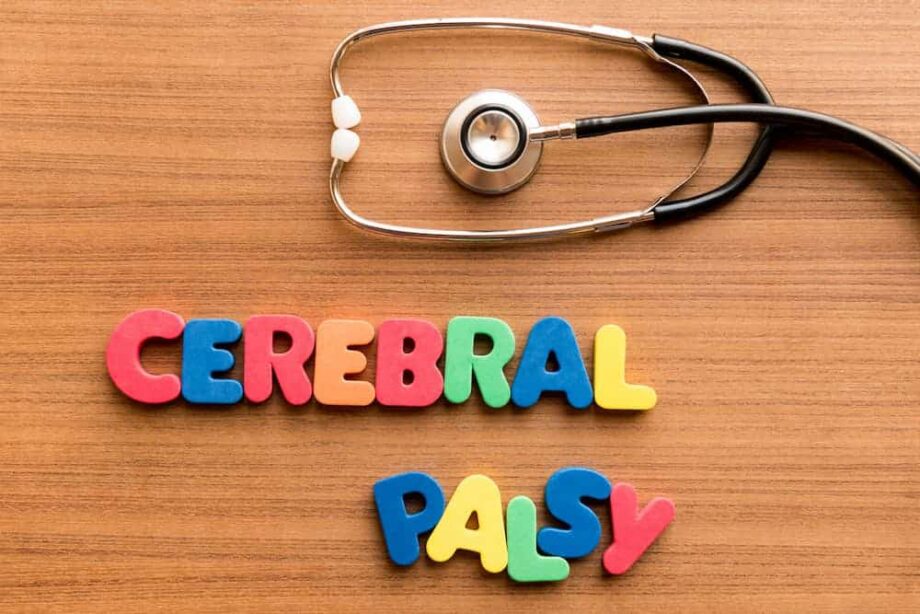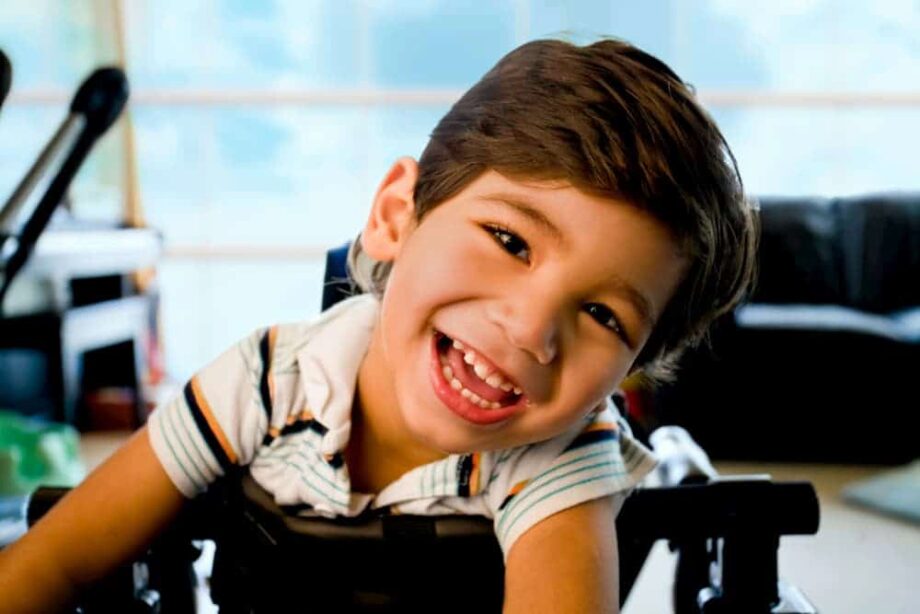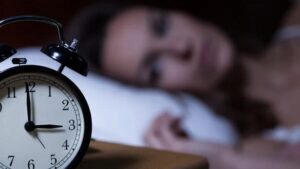Cerebral Palsy and Sleep
Disclosure: By clicking on the product links in this article, Mattress Nerd may receive a commission fee at no cost to you, the reader. Read full disclosure statement.

Cerebral palsy is the most common mobility disorder in children, affecting anywhere from 1.5 to more than 4 children per 1,000 live births, according to the Centers for Disease Control and Prevention (CDC). The condition affects a person’s ability to move and maintain balance and posture. But it can also adversely impact their sleep.
There are three types of cerebral palsy:
- Spastic cerebal palsy: Characterized by jerky movements, muscle tightness, and joint stiffness. Most children with CP (77.4%) have spastic cerebral palsy.
- Dyskinetic (athetoid) cerebral palsy: Characterized by involuntary or uncontrollable muscle movements, such as repetitive motions or twisting, slow movements, or unpredictable dance-like movements. About 10% to 15% of children with CP have athetoid cerebral palsy.
- Ataxic cerebral palsy: This type of CP mainly affects balance rather than muscle movements and includes symptoms such as unsteady walking, shaky movements, balance problems, lack of depth perception, trouble with fine motor skills, and difficulty controlling voluntary hand and arm movements. It is the least diagnosed type of CP, affecting about 6% of children.
Children with any form of cerebral palsy can experience sleep problems due to many factors, “but a large reason for the difficulty has to do with the involuntary muscle spasms they are confronted with that can cause pain, postural issues, and involuntary teeth grinding,” says Brook Sheehan, doctor of chiropractic at Cardiff Health and Wellness in California. Dr. Sheehan is not only a physician, she also has cerebral palsy. “So I have a great understanding of sleep problems both as an individual and a physician.”
According to a review published in the journal Children, between 23% and 46% of children with cerebral palsy have sleep problems — significantly more than children without the disorder. “This is concerning given that sleep is foundational to wellbeing and healthy neurophysiologic functioning, learning and memory,” the authors wrote.
Common Sleep Challenges for Children with CP
- Drooling: Excessive salivation is a common problem in children with cerebral palsy due to swallowing abnormalities, difficulty moving saliva to the back of the throat, poor mouth closure, jaw instability, tongue thrusting, lack of head control, lack of sensation around the mouth, breathing through the mouth, and other issues. Drooling can interfere with sleep if secretions pool into the back of the throat and cause coughing or choking.
- Gastroesophageal Reflux Disorder (GERD): GERD is a digestive disease that occurs when stomach acid is regurgitated into the esophagus. It is a common problem among children with cerebral palsy, making swallowing difficult and causing pain such as a burning sensation in the chest or soreness in the throat. Symptoms of GERD can worsen when you are lying down, which can interfere with sleep.
- Respiratory issues: Children with cerebral palsy, especially those with motor dysfunction, are at greater risk of having breathing complications such as aspiration, pneumonia, bronchiolitis, respiratory distress syndrome, and sleep apnea, a sleep disorder that occurs when breathing temporarily stops during sleep.
- Pain: Pain is one of the most common problems experienced by children and adults with cerebral palsy, which not only affects their quality of life, but also their sleep. CP-associated pain is caused by muscle spasms, spasticity or dystonia, abnormal posture, osteoporosis, scoliosis, GERD, procedures to treat their condition, dental pain, and even pressure sores from prolonged sitting in a wheelchair.
- Constipation: Constipation occurs often in children with CP. The connection is not clear, but it is thought to be due to their reduced mobility, certain medications, not drinking enough fluids, or difficulty eating fiber. Constipation can cause uncomfortable cramps and bloating which can interfere with sleep.
- Sensitivity to sound: Some children with CP suffer from hyperacusis, a hearing disorder characterized by an increased sensitivity to sound. According to Noise & Health, an international interdisciplinary journal, people who are sensitive to sound are at an increased risk of having a sleep disorder.
- Seizures: As many as half of all children with cerebral palsy will have at least one seizure in their lives, according to the National Institute of Neurological Disorders and Stroke. For some, the seizures can be frequent and difficult to control. Seizures at night can disrupt sleep, and seizures during the day can impact the quality of the next night’s sleep. For some, a seizure can disrupt sleep patterns for several days afterwards.

Sleep Advice for Parents
Keep a Sleep Diary
It can be difficult to identify your child’s issues with sleep especially if they have a difficult time communicating what the problem is. One way to better understand what is disrupting your child’s sleep is to keep a sleep diary over the course of several weeks. Discussing the information in these diaries with your child’s doctor may help you both develop a treatment plan so your child can get the sleep they need. Some information to record in your child’s sleep diary includes:
- Naps, including frequency and length of naps
- Bedtime and morning wake time
- Nighttime wakings and duration of wakefulness during the night
- How long it takes to fall asleep
- Sleep routine, such as baths or storytelling
- Foods or beverages consumed before bedtime
- Time and dosage of medications taken during the day
The Importance of Exercise and Nutrition
Research shows there is a strong correlation between physical activity, nutrition and sleep, especially when it comes to the health and wellbeing of children with cerebral palsy.
Exercise
Major secondary complications of CP include reduced muscle strength and endurance. There are several activities your child can do to get more physically active:
- Strength training using light free weights or cans of beans or water bottles
- Arm cycling
- Armchair aerobics
- Dancing
- Wheeling around in wheelchair
- Yoga
- Stretching activities, such as those outlined in this YouTube video
But before you get your child started on an exercise regime, it is recommended you consult an accredited exercise physiologist or physical therapist. Children with cerebral palsy face a number of limitations and will need exercises designed specifically to their individual needs.
Nutrition
Children with CP have problems with movement and fine motor skills which can make it difficult for them to feed themselves and swallow safely or successively. Plus, digestive problems like GERD and constipation can make them resistant to eating. It’s hard to ensure your child gets enough to eat, but you also need to be sure they are getting the right nutrition to thrive. Here are some ways you can help your child get the nutrients they need:
- Instead of three big meals a day, opt instead for eating smaller meals several times throughout the day.
- To help keep bones strong, be sure your child’s diet has enough calcium (found in milk, yogurt, cheese), vitamin D (found in fish and fortified products like milk, orange juice, and cereal), and phosphorus (found in dairy products, meat, fish, eggs, poultry, nuts, seeds, and whole grains).
- Work with a nutritionist or dietitian to identify the best foods for your child’s diet and whether supplements would be beneficial.
- If your child has difficulty eating, discuss whether a feeding tube should be considered for some meals.
What is Sleep Hygiene?
Sleep hygiene refers to practicing healthy habits that will make it easier to fall asleep in the evening. Here are some sleep hygiene suggestions that might help your child.
Nighttime routine: Establishing a nighttime routine about 30 minutes before bedtime can help your child wind down so they can fall asleep easier. Consider giving your child a soothing bath and reading a bedtime story or playing soothing music.
Sleep aid: If your child still has trouble nodding off, you may consider giving them a natural sleep aid containing melatonin, the sleep hormone, or a magnesium supplement called OptiMagNeuro, which has both Magnesium L-threonate and Magnesium Glycinate, Sheehan suggests. But, be sure to consult with your child’s doctor before beginning any supplement or other over-the-counter sleep aids as these may interfere with medication they are already taking.
New mattress: If your child is sleeping on an old, sagging mattress, it may be time for an upgrade. Online mattresses are a convenient and cost-effective option. Beds-in-a-box are made with materials like memory foam, latex foam, or a combination of foam and innerspring. These beds are not only supportive, but many also have performance factors like pressure relief at sensitive pressure points at the shoulders and hips, and spinal alignment to reduce back strain.
White noise machine: Children who are sensitive to noise can benefit from a white noise machine, which cancels out environmental and other household sounds so your child can relax and get a good night’s sleep.
Comfortable, breathable PJs: Comfortable pajamas can be a game-changer when it comes to good sleep. Be sure your child has soft, cozy PJs that fit loosely and don’t trap body heat. Cotton and bamboo fabrics are good options.
Avoiding blue light too close to bed: Blue light emanates from video game, television, phone and computer screens. It’s great during the day for keeping you alert. But within 30 minutes of bedtime, it can hinder sleep. “This blue light changes the circadian rhythms and makes it difficult to fall asleep at night,” Sheehan says.
Room temperature: Experts suggest setting the thermostat to between 60 and 68 degrees at night when you go to bed. “A cooler room makes for better restful sleep,” Sheehan says.
Avoiding stimulants before bedtime: All children love a sweet dessert after dinner, but try not to give sugary foods or beverages too close to bedtime as it can excite them and interfere with falling asleep.
Final Thoughts
Children with cerebral palsy are at higher risk for sleep problems due to “the pain, mobility impairment, and sensory processing (integration and interpretation of sensory input) problems that often accompany cerebral palsy,” according to a review published in the journal Children. But there are evidence-based strategies based on light, sound, temperature, and bedding that you can put into practice to help your child get a good night’s sleep so they are better equipped to tackle the day ahead.


